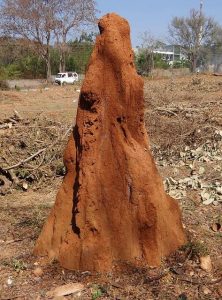How Can You Prevent Future Pest Infestations?

Congratulations on successfully eliminating pests from your property!
The exercise must have set you back a few hundred dollars. Depending on the scale of infestation, you probably also lost several hours in pre-treatment and post-treatment preparations.
Considering the rigorous nature of pest removal, no homeowner desires to undergo the same experience twice. But how do you keep unwanted critters from ever reinvading your property?
This post shall put that question in perspective.
Read below for a comprehensive guide on how to prevent future pest infestations.
1. Have Pest Control Services on Speed Dial
Pests are naturally elusive. Regardless of size, these critters prefer to fly under the radar, choosing only to venture out when the coast is clear.
Working with professional pest exterminators like Freedom Pest Control is the surest way to detect pest presence in your property.
Freedom Pest Control takes pride in providing residential and commercial pest removal services. Their comprehensive suite includes pest inspections, remediation, and prevention, ensuring your property is always free from these unwelcome guests.
2. Research Local Pests
Many pests are relatively widespread, occupying virtually all significant habitats worldwide. However, certain species are endemic to specific regions.
Research your local ecosystem to understand the pests most likely to infest your property.
This information is critical, as it lets you determine the species to target during routine inspections.
3. Recognize the Impact of Pest Infestation
Unless pests have wreaked havoc on your property before, you may not acknowledge the full extent of their destructive nature. Here’s how a pest infestation may impact your life;
a. Spreading Diseases
Most pests can encroach on your living space and contaminate foods, leading to gastrointestinal infections. Some, like mosquitoes and ticks, are also vectors of deadly diseases.
b. Weakening Your Property’s Foundation
Termites and carpenter ants can slip through cracks in your home’s foundation and consume wood, compromising your property’s structural integrity.
c. Crop Damage
Leaf-eating pests can cause massive crop failures. Some pests may also reduce agricultural yield by digging up plant roots or tunneling into fruits.
d. Dangerous Encounters
Encounters with certain pests, particularly larger wildlife, can be life-threatening. For instance, you could be mauled by a bear scavenging your trash cans for food or bitten by a venomous serpent attempting to slither into your attic for shelter.

4. Focus On Different Critters
When we think of pests, perhaps the first images that spring to our minds are of rats scurrying in the basement or termites building lofty mounds in our backyard.
Unknown to many homeowners, there are thousands of pest species. These include large wild animals like raccoons, snakes, and even feral cats.
Don’t just target smaller insects when pest-proofing your property. Instead, strive to keep out all unwelcome critters.
5. Remove Attractions
Pests venture into our living spaces seeking food, water, and/or shelter. Removing these attractions can lower the risks of infestation significantly.
i. Dealing with Food Attraction
Wipe the dinner table clean after every meal. It prevents household pests like cockroaches from nibbling on food crumbs and spills.
It’s also best to do the dishes immediately after use. Dirty kitchen utensils are a magnet for cockroaches and rodents.
If there’s leftover food, store it in airtight containers or dispose of it in tightly sealed garbage bins.
ii. Dealing with Water Attraction
While you require several mouthfuls of water to quench your thirst, a droplet would suffice for tiny insects like ants and mosquitoes. Therefore, wipe water spills off the floor and counters immediately.
After each use, you could also run a dehumidifier in the bathroom and kitchen.
To deter outdoor pests, drain all stagnant water from your yard. Be sure to also frequently empty flower vases, pet bowls, and bird feeders.
Moreover, address plumbing issues, including leaky taps and blocked pipes.
iii. Barring Access to Your Property
Mosquitoes, bed bugs, roaches, and other small pests can slip into your house through the tiniest crevices. To keep these insects off your property, seal all cracks in the walls, foundation, and even roof.
It’s also prudent to beware of open entryways. Rats will confidently scurry into your house through open doors and windows, especially after dark.
Hanging floor-length curtains and installing bug zappers can help deter smaller insects, including mosquitoes and flies.

6. Invest In Pest-Repellent Plants
Numerous plants exude chemicals known to repel certain pests.
For instance, mosquitoes and ticks are repulsed by lavender, mint, and garlic. Adding these plants to your wellness garden may help keep pests out of your property, in addition to their usual therapeutic properties.
However, certain water-holding plants like lilies may draw pests into your home. You want to avoid such.
7. Mow the Lawn
An overgrown yard provides pests with the perfect nesting place.
Besides, dense foliage can create a hiding spot for larger animals like serpents.
Following a robust lawn maintenance plan is the surest way to keep these critters off your property.

Wrap Up
Pest extermination doesn’t come cheap. The exercise can set you back thousands of dollars, depending on the types of pests involved and the scale of infestation.
Besides pest removal costs, the procedure itself can be time-intensive. Not to mention exposing you to potentially harmful chemicals.
Embracing a preventive approach is the most effective way to manage pest infestation.
Remember to schedule comprehensive property inspections at least once every six months. Routine check-ups can uncover early warning signs of unwelcome critters in your home, enabling you to implement timely interventions and nip the problem in the bud.






